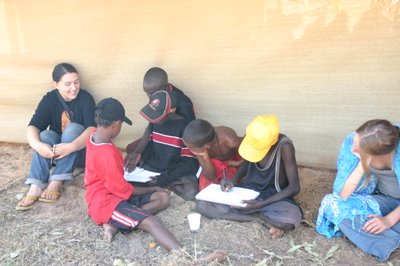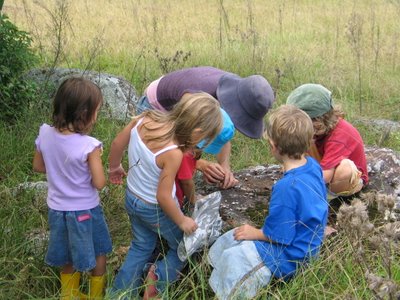LEV VYGOTSKY

1896-1934
"Learning is more than the acquisition of the ability to think; it is the aquisition of many specialised abilities for thinking about a variety of things"
The major theme of Vygotsky's theoretical framework is that social interaction plays a fundermental role in the development of cognition.
Lev Semyonovich Vygotsky was a Soviet developmental psychologist whose work received widespread recognition in the Western world around the 1960s.
By the 1980s, Vygotsky's work became well known in the United States in part due to the opening of the Soviet Union due to glasnost. Vygotsky's work became extremely influential because it offered a way of reconciling the competing notions of maturation by which a child is seen as an unfolding flower best left to develop on his or her own, and environmentalism, in which a child is seen as a blank slate onto which must be poured knowledge. His views are influential on activity theory, distributed cognition, and Cognitive Apprenticeships.
KEY ELEMENTS OF VYGOTSKY'S THEORY
Zone of Proximal Development
This concept allows an educator to find the distance between a child’s development level determined by independent problem solving and the level of potential development under the guidance or in collaboration with more capable peers. This idea of a significant adult guiding a child through the ZPD is known as scaffolding. This concept has been further developed by Jerome Bruner and influenced his related concept of instructional scaffolding.

Importance of Culture
According to Vygotsky the thing that separates our development from that of the animals is our use tools and symbols i.e. language and cultural behavoiur . It is through these cultures that we develop as they dictate what we have to learn, and the sorts of skills we need to develop.
"A word devoid of thought is a dead thing, and a thought unembodied in words remains a shadow."
The learning of a language is brought about by social processes, and language or signs ultimately make thought possible. Therefore, when a child is an infant, at the preverbal stage of development, his/her intelligence is a purely natural, useful capacity. As a child begins to develop so does his/her language. As a child begins to speak, his/her thought processes also begin to develop. In essence, it is language or signs which directs behavior. This concept, explored in Vygotsky's book Thought and Language, establishes the explicit and profound connection between oral language (speech) and the development of mental concepts. It is through speech, Vygotsky argued, words play a central part not only in the development of thought but in the historical growth of consciousness as a whole. A word is a microcosm of human consciousness. Thought undergoes many changes as it turns into speech. It does not merely find expression in speech; it finds its reality and form. Therefore thought is not merely expressed in words; it comes into existence through them... the speech structures mastered by the child become the basic structures of his thinking.
The structure of the language one habitually uses influences the way he perceives his environment ...
Cultural development of language
"Words play a central part not only in the development of thought but in the historical growth of consciousness as a whole. A word is a microcosm of human consciousness."
Vygotsky suggests that a child aged 5-6 memorizes things naturally and immediately using no devices to help him or herself. On the other hand a child of school age would have at his disposal devices that would help him memorize information. He is able to link the material to be memorized to his previous experiences and use his associations to help him. Both children have memory but only the school child knows how to use it to his advantage. The development from childhood to adulthood consists of this transformation of natural memory to cultural forms of memory.
The mass of memory development in a child is "a result of mastering associations and images and also the ability to use them functionally for the purpose of memorization." (Luria, 1992).
Elementary and Higher Mental Functions
Elementary functions are natural, and therefore unlearned capacities. These functions include sensing and hunger. There is really no thought involved in these types of functions.
Higher mental functions involve self-generated stimulation. Language, memory, thinking, attention, abstraction and perception are self-generated activities that become the immediate causes of behavior.
Another important aspect of Vygotsky’s theory is the role of play. Like Piaget, Vygotsky asserts that play is not the predominant feature of childhood but is a leading factor in childhood development. He does this by firstly defining play in the varying stages of childhood. At the first stage, that of a child under three, play is an intimate fusion between word and object, between meaning and what is seen. This can bee seen in the “naming game” that is often played with children of this age. An adult or older child says “chair”. The child starts looking around the room and finds the chair. In essence, Vygotsky believed "play is the source of development." Psychology of play was later developed by Vygotsky's student Daniil Elkonin.
“The first function of the word is to orient spatially, to isolate particular areas in space; the word originally signifies a particular location in a situation.” Vygotsky.

Cultural mediation and internalization
In addition to these ideas, Vygotsky also forwarded the notion that culture and community play a huge role in early development. Vygotsky is well-known for his model being termed sociocultural approach. For him, a child's development is a direct result of her/his culture. For Vygotsky, development applied primarily to mental development, such as thought, language, reasoning processes and mental functions. However, Vygotsky observed that these abilities developed through social interactions with significant people in a child's life, particularly parents, but also other adults. Through these interactions, a child came to learn the habits of mind of her/his culture, namely speech patterns, written language, and other symbolic knowledge that effected a child's construction of her/his knowledge. The specific knowledge gained by a child through these interactions also represented the shared knowledge of a culture. This process is known as internalization.
Influence and Development of Vygotsky's Ideas
In the Soviet Union, the ideas of Vygotsky were developed largely under the banner of activity theory that was introduced and systematically developed by such Vygotsky's students and colleagues as Alexei Leont'ev, P. Zinchenko, Zaporozhets, D. El'konin, as well as Gal'perin, Davydov, Smirnov, Talyzina, etc.
In the West, most attention was aimed at the continuing work of Vygotsky's Western contemporary Jean Piaget. Early - albeit indirectly - influence on growing the cognitive science community in the United States was already apparent in the late 1950s and early 1960s through the work of Vygotsky's student and collaborator Alexander Luria which was read by early pioneers of cognitive science J. S. Bruner and George Miller. However, Vygotsky's work appeared virtually unknown until its "rediscovery" in the 1960s, when the interpretative translation of Thought and language (1934) was published in English (in 1962; revised edition in 1986, translated by A. Kozulin and, as Thinking and speech, in 1987, translated by N. Minick). In the end of the 1970s, truly ground-breaking publication was the major compilation of Vygotsky's works that saw the light in 1978 under the header of Mind in society: The development of higher psychological processes.

Vygotsky's texts online
- Lev Vygotsky archive @ marxists.org.uk: all major works (in English)






0 Comments:
Post a Comment
<< Home